Summer clematis care and growing guide: expert advice for these pretty climbing plants
Learn how to grow clematis and boring garden boundaries will soon be a thing of the past

Teresa Conway

Summer clematis are a must for any backyard, no matter what size. With their beautiful blooms, they are perfect for disguising unsightly fences and help to blur the edges of your garden, which is a great way to make a small space feel bigger.
Clematis can also be combined with other climbing plants for a bold display. Try contrasting colors, such as a bright purple clematis with a pale pink rose. Or, try training one up a trellis alongside an evergreen shrub for some extra foliage.
Don't forget that there are winter clematis, too, which are wonderful garden additions for the colder months. Our dedicated guide explains how to grow them, but here, we share everything you need to know about the summer-flowering types.
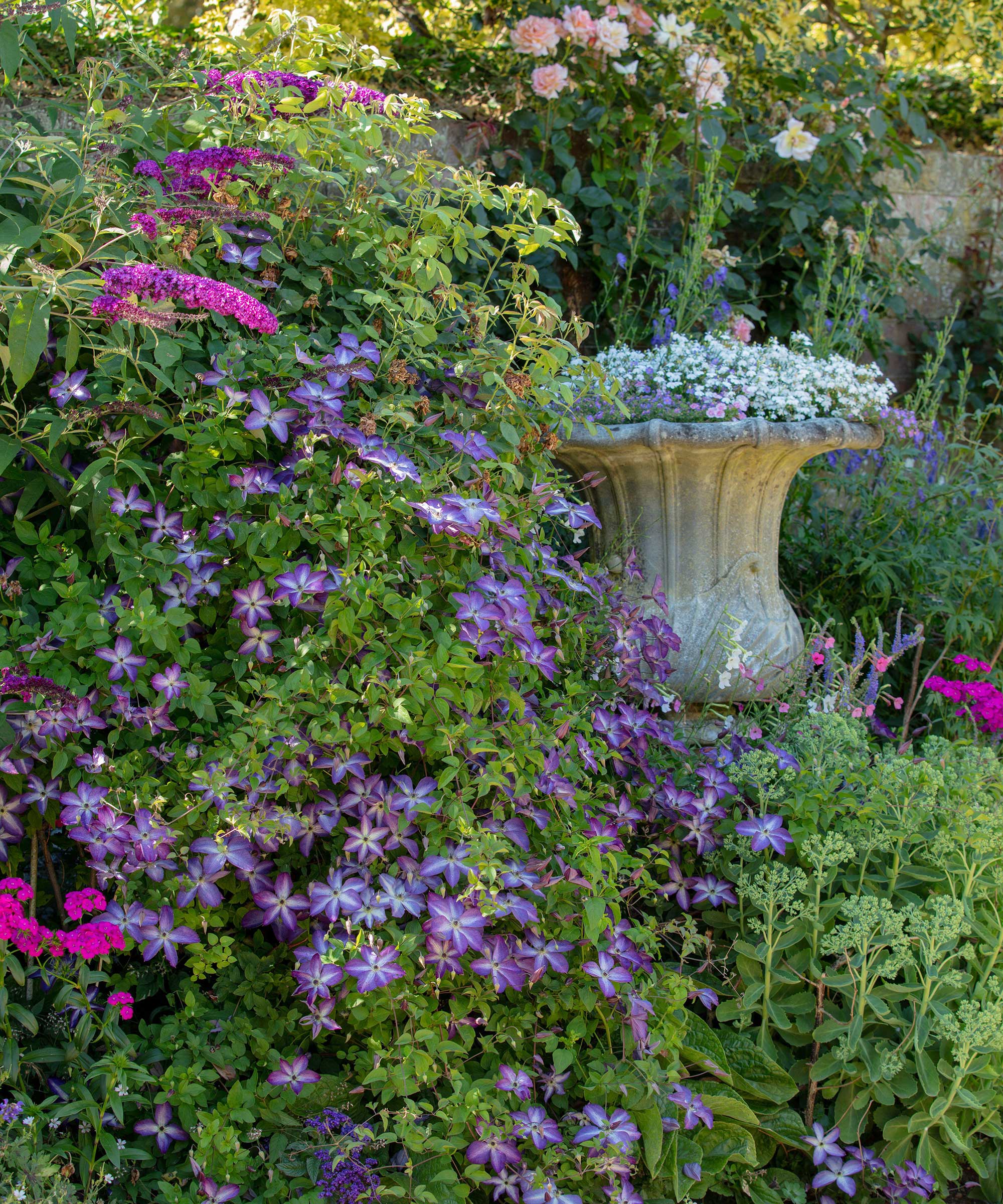
How to grow summer clematis in the ground
Soak your new summer clematis plant by standing it in a bucket of water for about 15 minutes. While your clematis is soaking, prepare the planting site by amending the soil with garden compost or bagged soil improver.
They'll tolerate light chalk to sandy acidic soil types, but not heavy clay or sites prone to waterlogged soil in winter. If you have this sort of soil, mixing in grit for drainage is essential. The old saying has it that clematis should be planted 'head in the sun, feet in the shade' because although they bloom most prolifically in good light, clematis prefer their roots to be cool. This copies the situations in which they grow in the wild, with their roots near the trees and shrubs they use for support and not flowering until their branches emerge into sunlight.
Use a hand trowel to make a planting hole, then stand your clematis in the hole to check the planting level – clematis should be planted so that the level of the soil ball is below the surrounding soil. This encourages the new plant to develop dormant buds below soil level, which will only grow if the plant is damaged or is attacked by wilt.
After refilling the hole, irrigate again and mulch with weed-free organic matter.
Plant your clematis so that new growth can quickly find its support. The experts at Spring Hill Nurseries recommend: 'The climbing structure should be placed at the same time you plant the clematis. By having a trellis, arch, or climbing net in place, your clematis vines can immediately start twining around their new supports – and, you'll avoid injuring the roots of the plant by staking the supports into the ground after the roots have begun to grow.'

How to grow summer clematis in a pot
Growing a summer clematis as part of a container garden will bring versatility to your patio or terrace.
In order to give your clematis the best chance, it's important to choose a large container, which is at least 18in (45cm) deep and across, as clematis develop an extensive root system.
Choose a terracotta or thick synthetic container, or a half barrel, and avoid thin plastic containers. Plant in well-drained potting soil, and stand the container on pot feet to encourage good drainage.
As mentioned above, plant summer-blooming clematis varieties so their stem bases are buried 5–8cm (2–3in) below soil level. Prune spindly newly-planted clematis to 12in (30cm) above soil level to encourage multiple stems.
Raymond Evison, who developed the Boulevard Series of patio clematis especially for containers, says, 'These compact clematis provide instant appeal in the garden center, with their multi-blooms. They are free and repeat flowering from late spring to late summer and will flower again in the autumn. Boulevard Clematis are ideal for the gardener to grow in containers, and will require hard pruning each spring to 12in (30cm).'
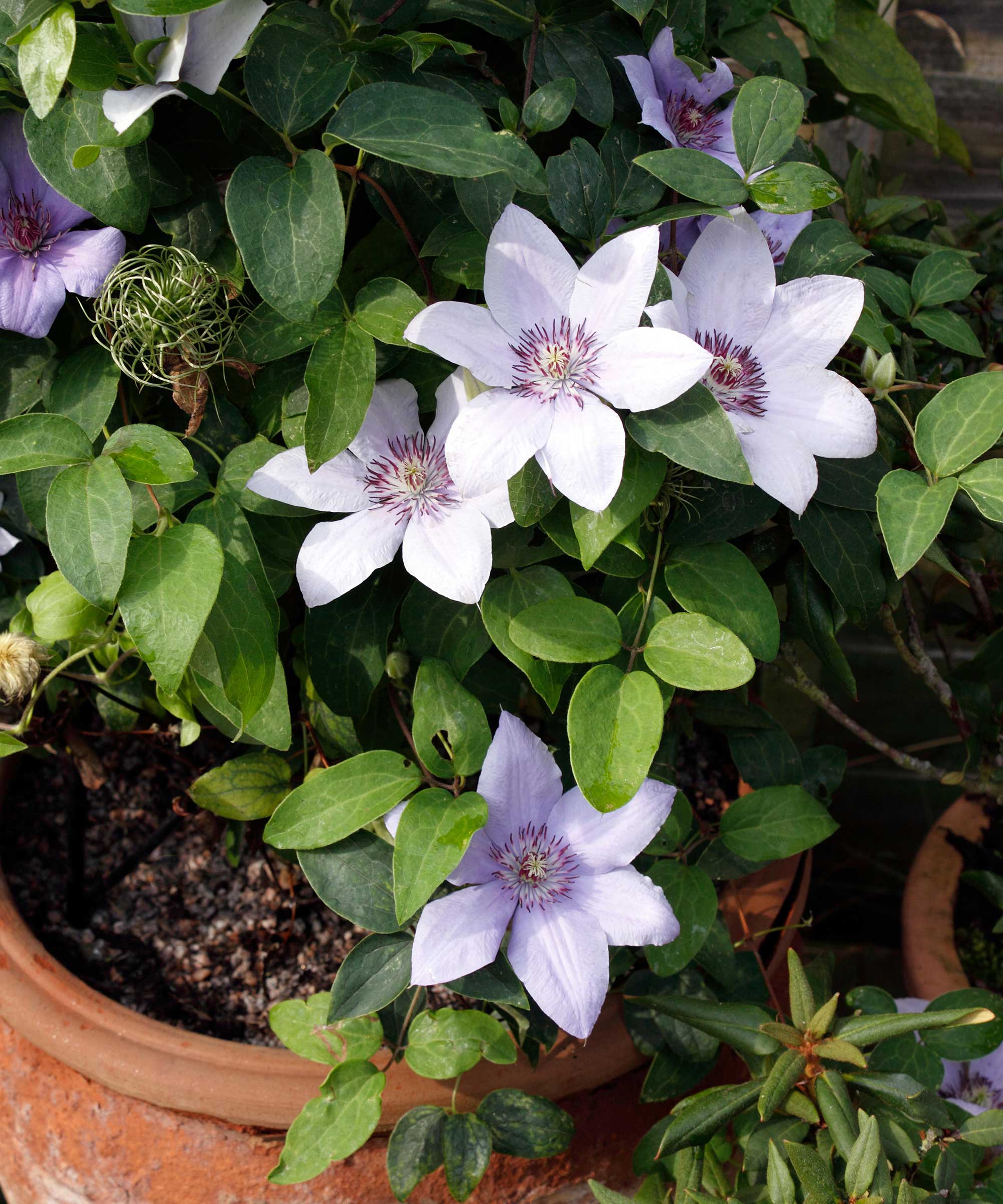
When to plant summer clematis
Clematis can be planted at almost any time that the ground is not waterlogged or frozen, but the best time is between late summer and late fall. Clematis can produce a surge of root growth in fall and new plants will quickly establish in their new home.
Late spring and summer are the most stressful times of year for clematis and fall planting ensures that newly planted clematis have settled in when stress levels build.
If fall planting is not possible, such as when mail order plants arrive early in the year, plant in spring as soon as soil conditions allow.
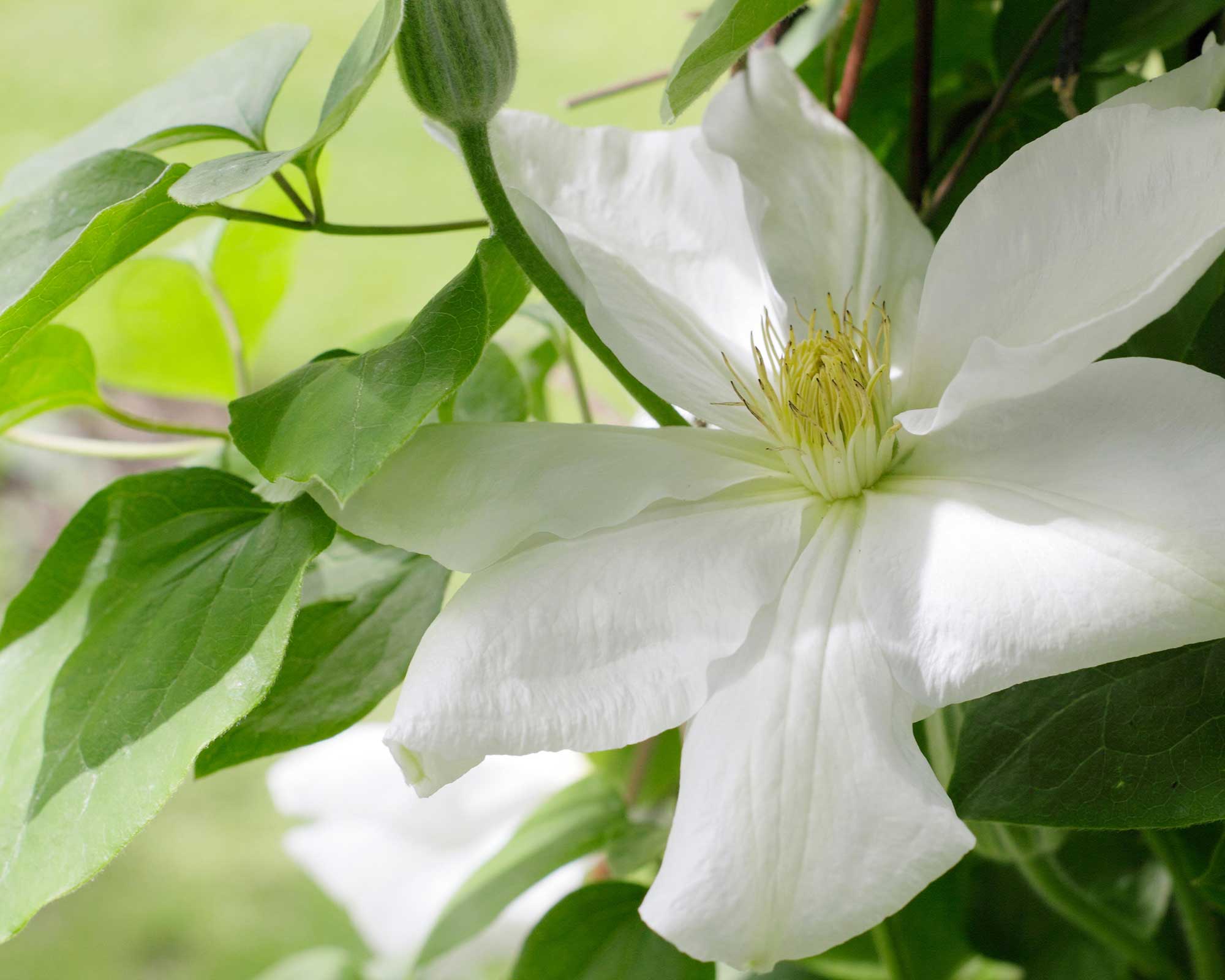
How to care for summer clematis
Summer clematis care is easy once you know some simple tips and tricks.
As the new growth develops through spring, guide it where you need it to go and perhaps tie in a few shoots to make sure that it heads in the right direction. When you're happy with the height, pinch out new growing tips to encourage even more flowering stems.
Use a high-potash feed, such as a rose fertilizer, throughout the growing season to encourage better flowering. And keep watering your clematis – particularly if you're growing them in a container, as they don't like to dry out. A spring mulching of bark chips or any other weed-free mulch will help keep the soil cool and moist and prevents weed growth.
Take extra care of your clematis during the summer months. Weed around them carefully, being sure not to disturb stems and roots. If the roots are in sun, add ground cover plants to create shade.
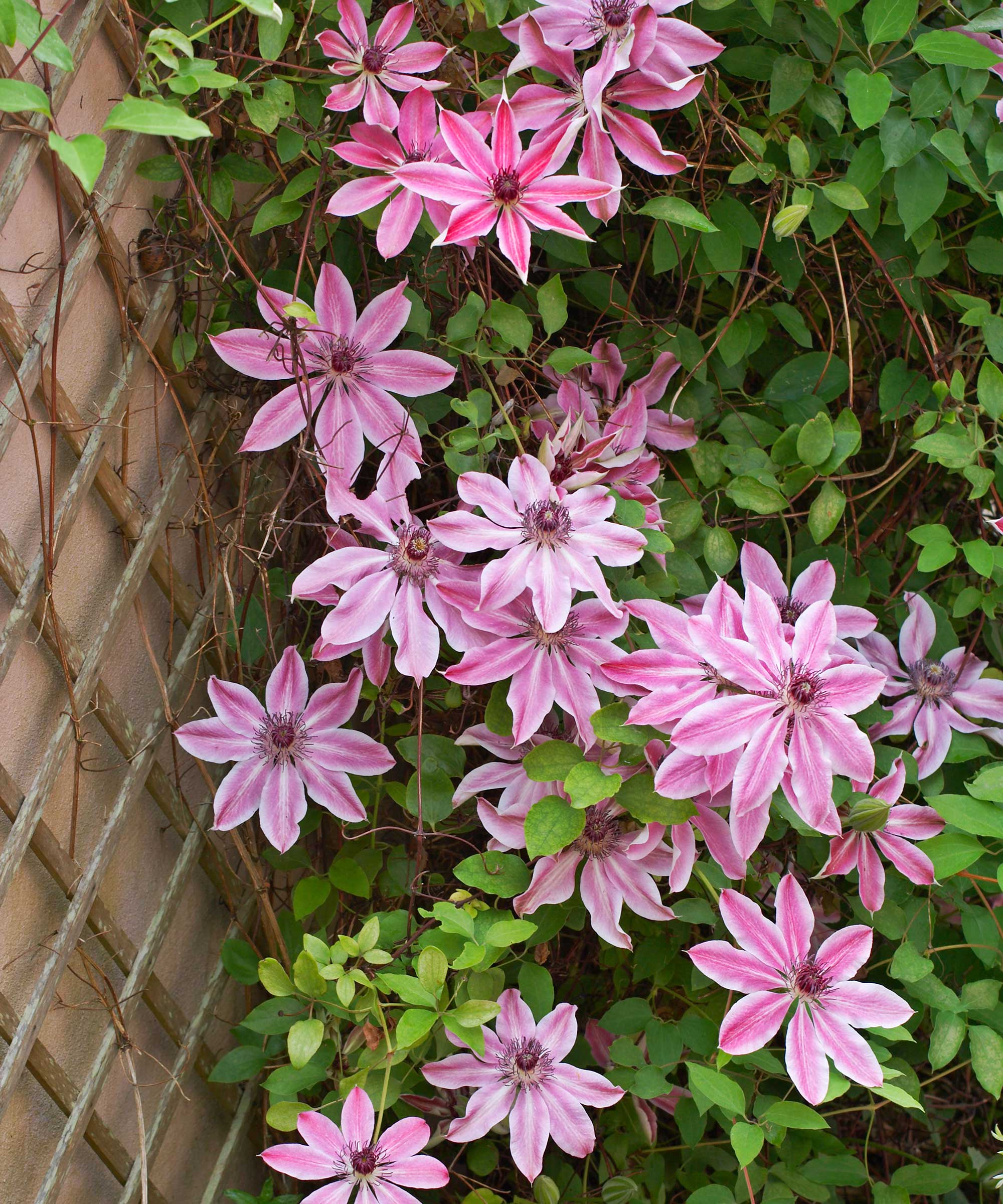
How to prune summer clematis
First, consider whether you need to restrict the growth of your summer clematis. If not, then do nothing – simply allow it to grow up into a mature tree or take over more space.
If you need to restrict the growth of your summer flowering clematis – if it is growing in a container or on a fence, for example – then learning how to prune clematis isn't too tricky. Our guide explains all.
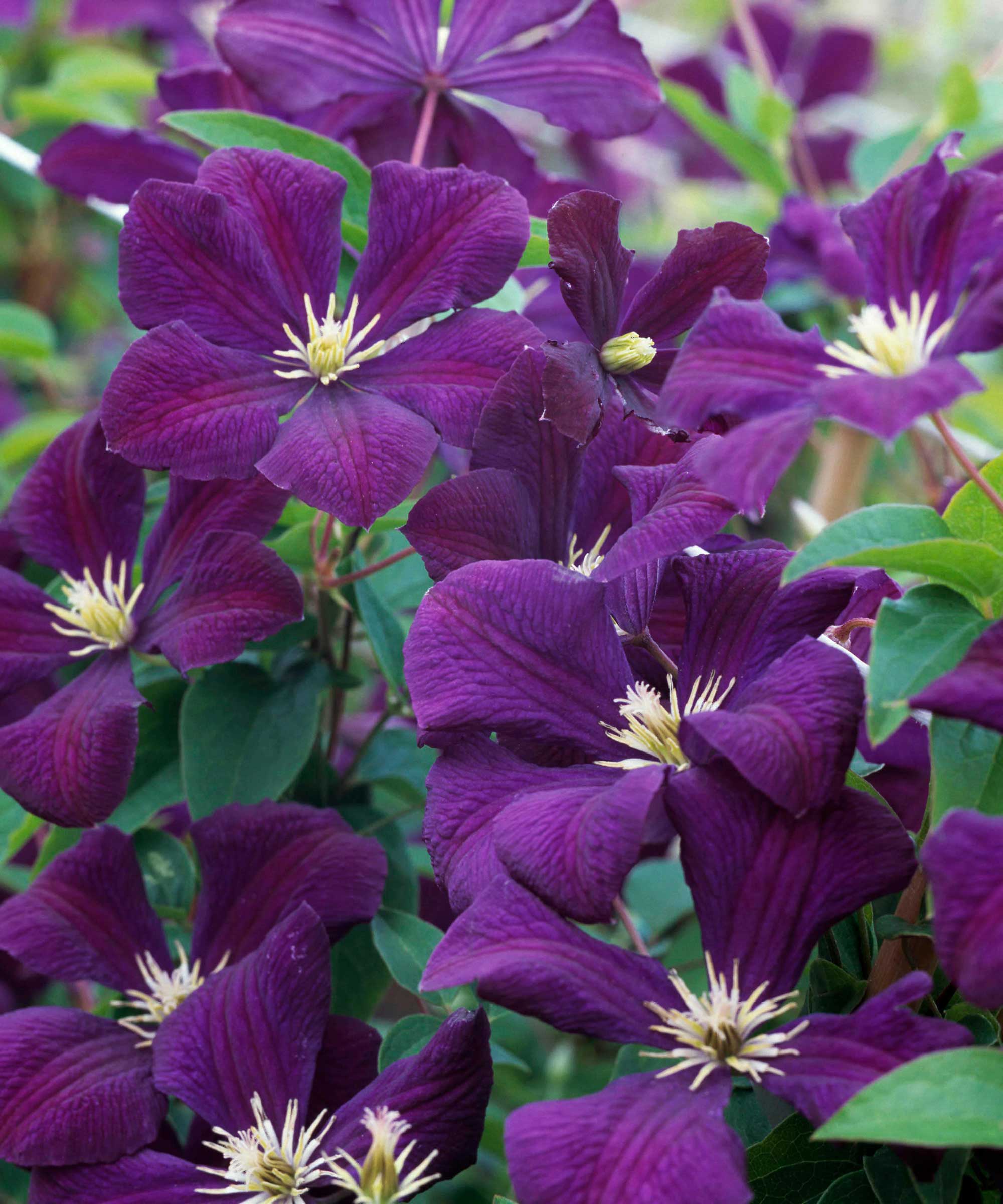
How to make more summer clematis
Summer clematis are easy to propagate – if you choose the right method. Taking cuttings is not usually successful, and most summer clematis do not produce good seeds. But clematis can be propagated by layering, although it can be slow.
At its simplest, layering involves choosing a healthy shoot that grew the previous year, and bending it down so that a point where a pair of leaves joins the stem can be buried in the soil. Snip off the leaves, make a hole, bury the leaf joint 1–2in (2.5–5cm) deep, cover with soil and put a stone or half a brick on top to keep it all in place. Water well – and forget about it until fall, except to irrigate in dry periods.
If all goes well, new shoots should appear in summer, and in fall, the new plant can be snipped from its parent, dug up, and planted somewhere else.
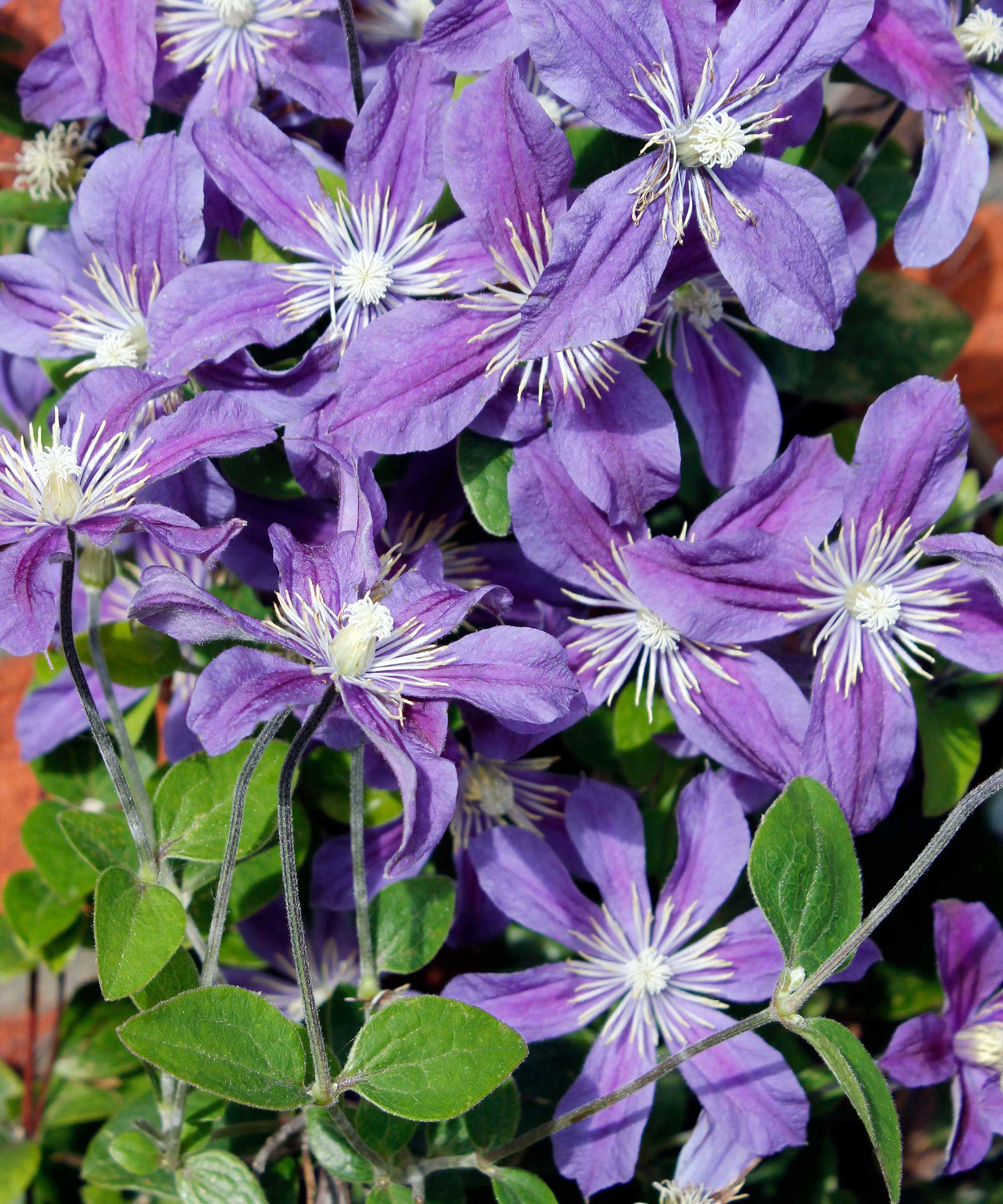
Are summer clematis deer resistant?
No, clematis are not deer resistant plants.
The New Jersey Agricultural Experiment Station at Rutgers, The State University of New Jersey, reports that clematis 'are occasionally severely damaged, are often preferred by deer, and should only be planted with additional protection such as the use of fencing, repellents, etc. Success of any of these plants in the landscape will depend on local deer populations and weather conditions.'
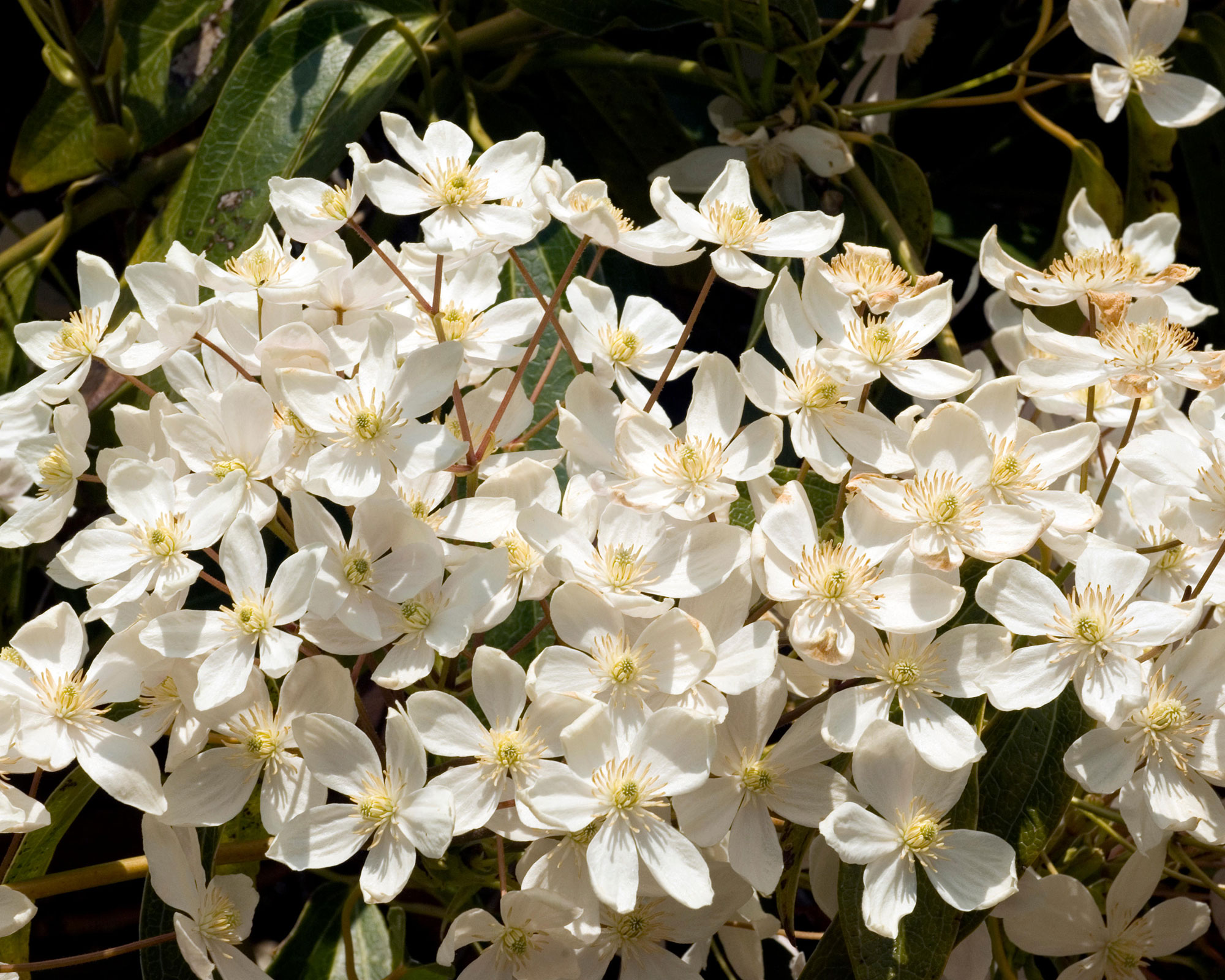
Are summer clematis invasive?
The experts at the Invasive Species Compendium report that sweet autumn virginsbower (Clematis terniflora), is an invasive plant.
'Clematis terniflora is a perennial woody vine, native to Asia and introduced to North America as an ornamental,' they say. 'It can self-seed, has escaped cultivation in many parts of the USA, and is reported to be invasive in a number of eastern states. It grows in forest margins, scrub, grassy areas on hills and slopes, and in disturbed areas such as roadsides, thickets, and urban green spaces. Seeds are widely dispersed by wind.
'It grows rapidly, forming dense clumps that outcompete and cover young native trees, shrubs, and herbs at ground level and suppress seed germination. It can also climb to nearly 35ft (10m), smothering trees and pulling down telephone poles.
'Sweet autumn virginsbower is difficult to control. Removal by hand can help encourage the growth of native species, but is unlikely to eliminate the plant entirely due to root re-sprouting and prolific seed production. Some herbicides have proven effective in controlling the spread of this species; however, repeated applications are necessary.'
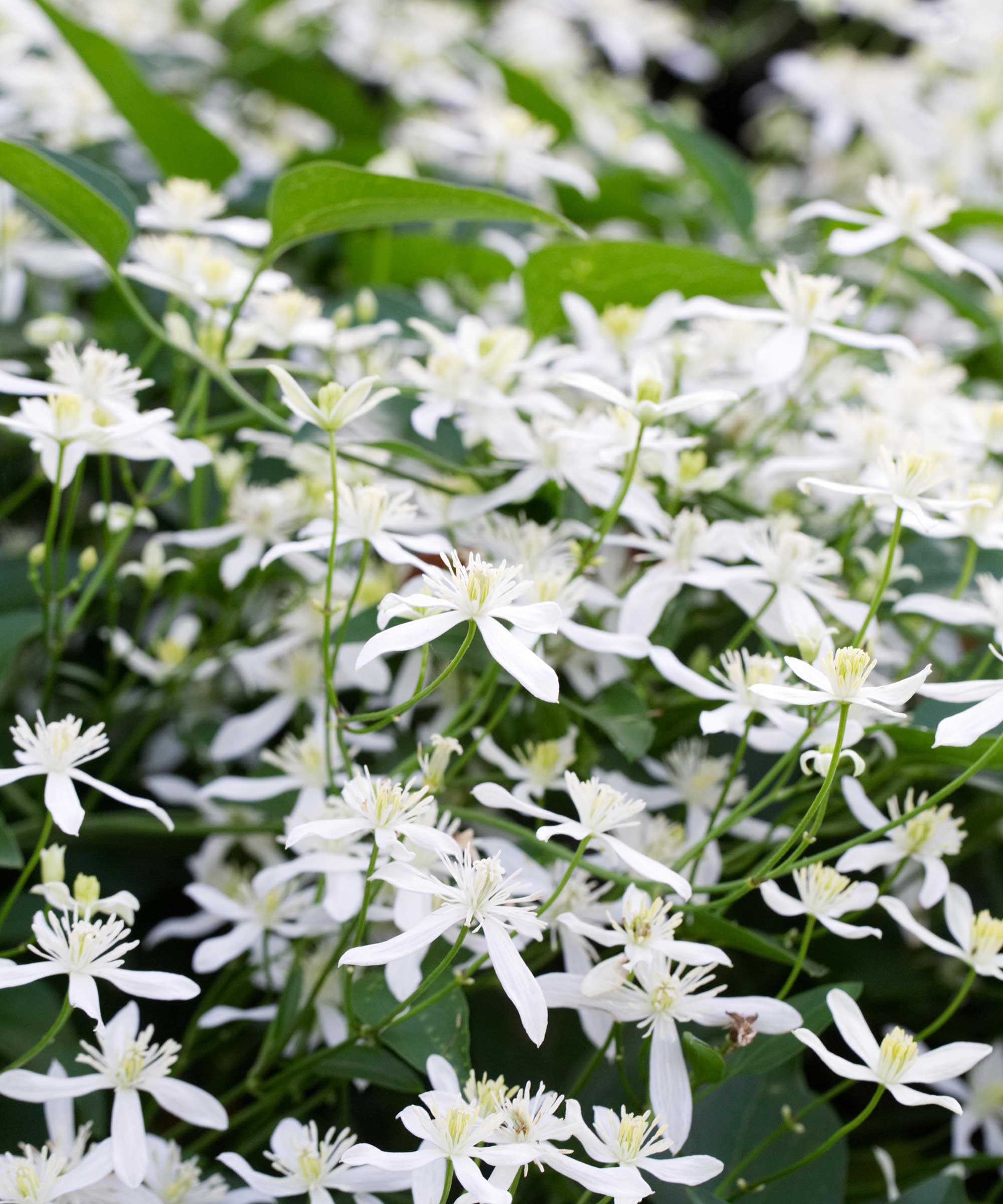
Where to buy clematis
Summer clematis are not always sold in flower at retail nurseries or garden centers because, at flowering time, the plants are large and their tangled growth can be too difficult to manage without damage.
However, advances in the packaging of plants for shipping by mail-order nurseries have led to the development of cardboard packs that protect plants in full growth very well.
In spite of these improvements, the best approach to buying summer flowering clematis is to order for spring shipping. Different nurseries supply plants of different sizes from 4in (10cm) pots to gallon (or, in the UK, three-liter) pots. The plants will have been cut back hard in late winter, at their normal pruning time, and should be just starting into growth when they arrive.
If you fancy adding some of these plants to your own backyard now that you've learned how to grow clematis, our quicklinks below will help you start your search:
Where to buy clematis in the US
- Buy clematis at Amazon
- Buy clematis at Lowes
- Buy clematis at Walmart
- Buy clematis at Brushwood Nursery
- Buy clematis at Spring Hill Nursery
- Buy clematis at Donahue’s Greenhouse
Where to buy clematis in the UK

Graham Rice is a garden writer who has won awards for his work online, and in books and magazines, on both sides of the Atlantic. He is a member of a number of Royal Horticultural Society committees and the recipient of the 2021 Garden Media Guild Lifetime Achievement Award.
- Teresa ConwayDeputy Editor
